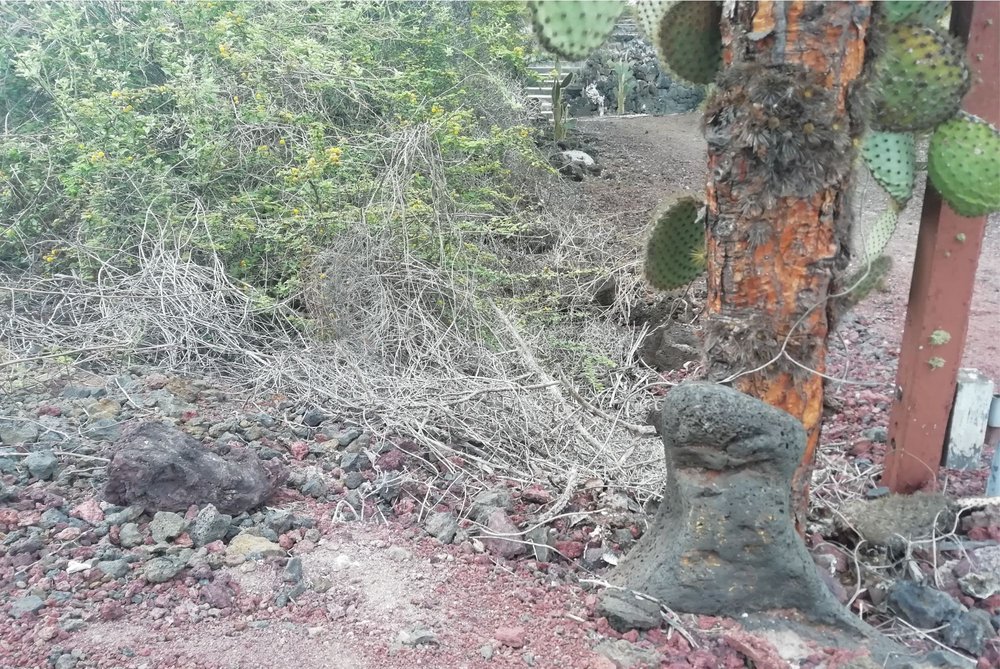
Author: Edgardo Civallero
The man, already aged but with a vitality that many twenty-somethings would want for themselves, walked with us the bunch of yards from the Charles Darwin Foundation (CDF) library until the entrance to the "Station Beach". We were interviewing him for our oral history program. Throughout the journey we were chatting about times gone by, about people who are no longer among us, about events that were recorded only in some corner of his head, about things said and done, about adventures and misadventures, and about other memories — some of them quite blurred, others not that much.
Step by step, laughter after laughter, we approached the beach, and the buildings that stand there.
"There was my house," he said.
A couple of days earlier he had shown us a photo of "his house". It was a simple, quadrilateral building, with an even simpler roof. It had been "his place" for some time, and he had fond memories of that corner in the Galapagos where he had shelter and where, I suppose, he produced ideas and projects, he dealt with failures and problems, and he developed his academic research and conservation work. For the man I am talking about is one of the great names of science in the islands, an active and respected member of the CDF, and one of the voices that have survived over the years to continue reminding us, the youngest ones, where we come from.
Basically, because if we do not know our past it will be difficult for us to understand where we are standing, or where we can go.
"There, there was my house," he repeated, in a Spanish tinted with northern accents. And so, it was. His home had been located on that stone esplanade, a spot where other houses, built long after, are located today. We thought that there would be no vestige of those times. We were wrong. The man commented that the two tall Opuntias that still force their roots in that rough, stony land had been his neighbors, his companions.
We went to the tallest and oldest one and take him a photo by its side. And when we were going to do the same with the second Opuntia, the man laughed out loud and pointed at a black boulder that loomed at the feet of the plant, almost resting on its brown and scaly bark.
"That's my doll!" he exclaimed.
We looked at each other, between doubtful and amused, thinking that memory was playing tricks on our companion. That half-buried stone was just another of the thousand volcanic fragments that cover the surroundings of the Charles Darwin Research Station. The man looked at us, smiling, perhaps perceiving the doubt in our eyes, and explained himself.
In the old days, when he lived in that place, he found a huge rock with a feminine shape: a torso with a well-marked head, shoulders, and breasts. He placed it against the Opuntia at the entrance of his house and kept it there. It was his "doll". Over the years, the works to build the street connecting Puerto Ayora and the Research Station threw a lot of rubble to the sides — and covered that stone "bust", without anyone noticing it.
It was enough for us to play archaeologists and push aside part of that rubble to discover shoulders below the head. And further down, the rest of the "doll". Our interlocutor laughed, pleased, and touched his temple, in a silent sign that he did remember well.
The man was Tjitte de Vries. And her "doll" was, is, and will continue to be there: buried up to her neck, right at the base of the Opuntia standing at the entrance of the first houses of the Station.
That is how memory works. Sometimes it uses the most unexpected fragments of the past to relive, through them, an entire period, a whole history. Sometimes it is capricious, and it seems to throw in our face elements that seem irrelevant, or simply anecdotal. But they should not be discarded. One never knows what may be behind those little memories.
For, as the Argentinean songwriter León Gieco points out in one of his lyrics, "everything is hidden in the memory, / the refuge of life and history".





